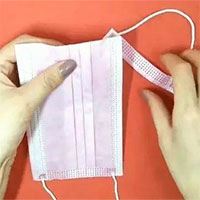Humans have many ways of communicating, such as writing letters, sending messages, drawing pictures, sending emoticons or using hands to express through sign language.
But if we want to communicate verbally, we must use our mouths to make sounds. The sound is produced when we use the air in our lungs to vibrate the vocal cords located in the larynx .

Place your hand on your neck, where the larynx is, to feel how the vocal cords vibrate.
To know where the larynx is, touch the neck in the middle from the chin to the sternum, you will see a small protrusion, in men sometimes see very clearly this lump is protruding and moving up and down.
The passage of air in the lungs causes the vocal cords to vibrate slightly but very quickly.
Feel when your vocal cords vibrate by placing your hand on your larynx (like the boy in the picture below), then make an “a” sound.
Another way to visualize sound is to imagine your lungs as an inflated balloon, the knot of the balloon being the vocal cords. When the balloon is knotted, the vocal cords close and air cannot pass through. When this button is removed, the vocal cords are relaxed and the air is released, just like when we exhale.
But if you lengthen this knotted stalk, air will slowly come through, vibrating the stem and making a sound.
Likewise, your vocal cords vibrate as well.
The sound then continues to be modified as it travels through the throat to the mouth and nose. Now you can control this acoustic air flow with your lips, tongue, teeth and palate to create different sounds.
For example, when you say “a”, you are controlling the vocal cords to vibrate with your mouth wide open and use your palate to block air, preventing air from going up your nose. If you say “eh” or “oh”, the air still vibrates in your mouth, but you have changed your mouth shape (shape, position of your lips), so the sound is no longer “a”.
When you speak a foreign language, some sounds are made without the vocal cords. For example, try making the “ssss” and “zzzz” sounds to see the difference. When pronouncing these two sounds, the shape of the mouth and the position of the tongue, lips, teeth and palate are the same, but the “s” sound does not use the vocal cords like the “z” sound.
Try saying these two sounds again loudly to get a better feel for when your throat vibrates.
When we speak quietly, the sound comes out in a different way. At that time, we do not use the vocal cords but only bring air from the lungs to the mouth, tongue and lips.

